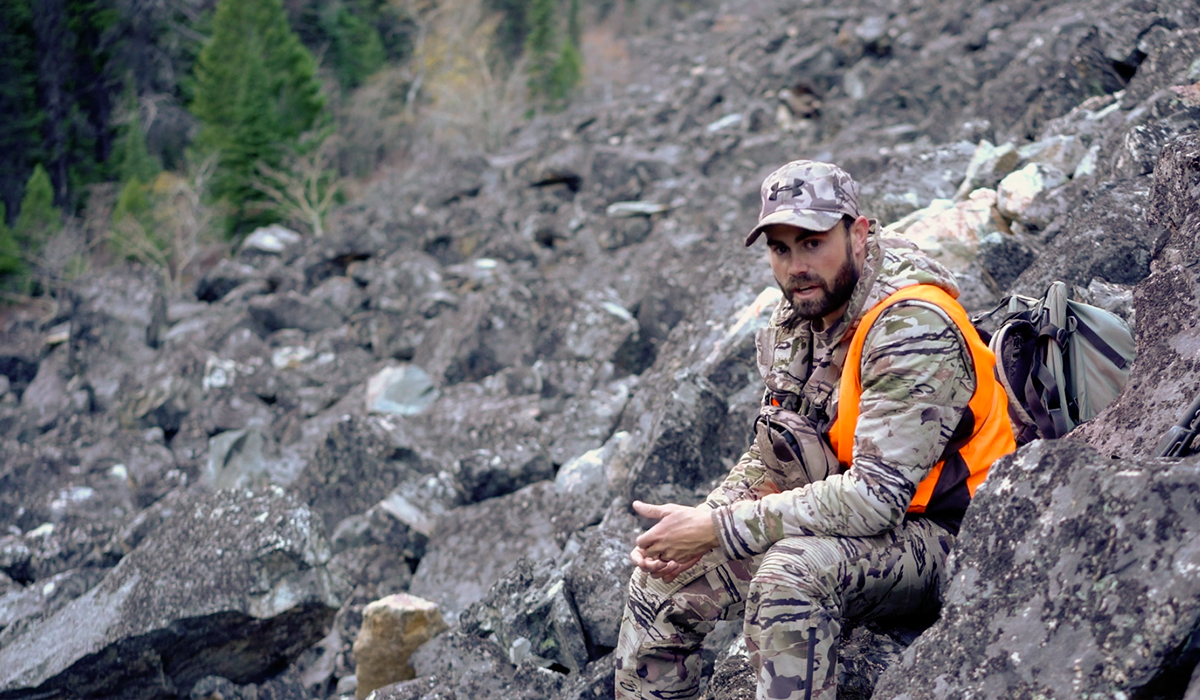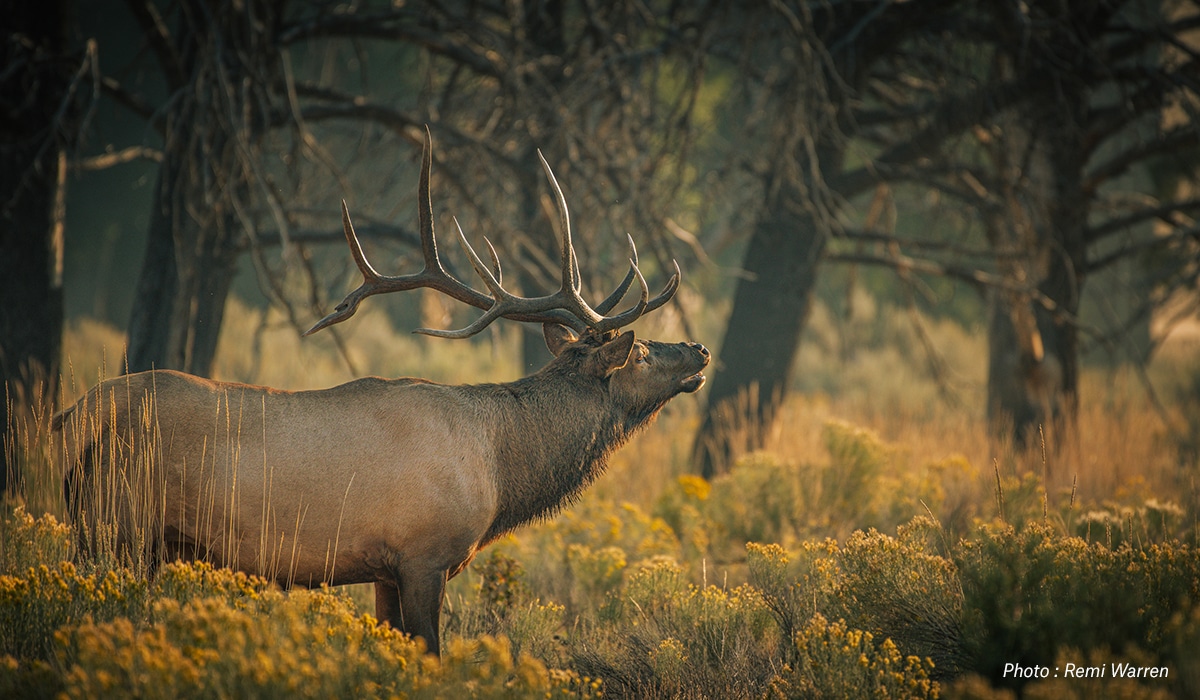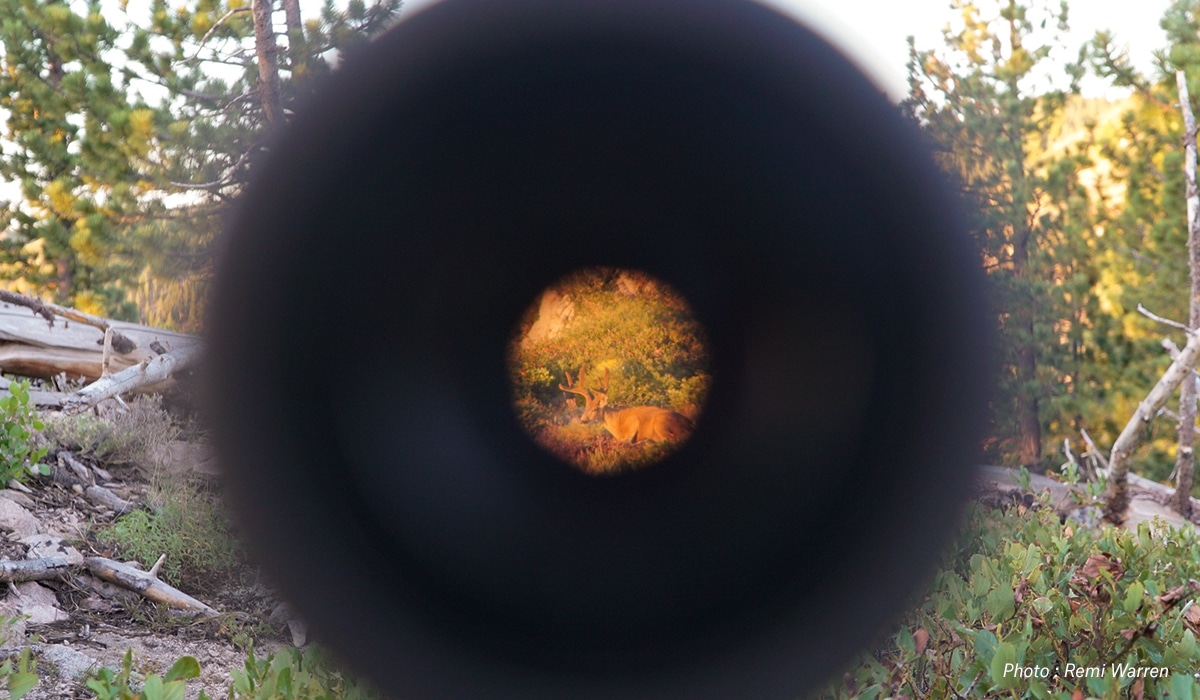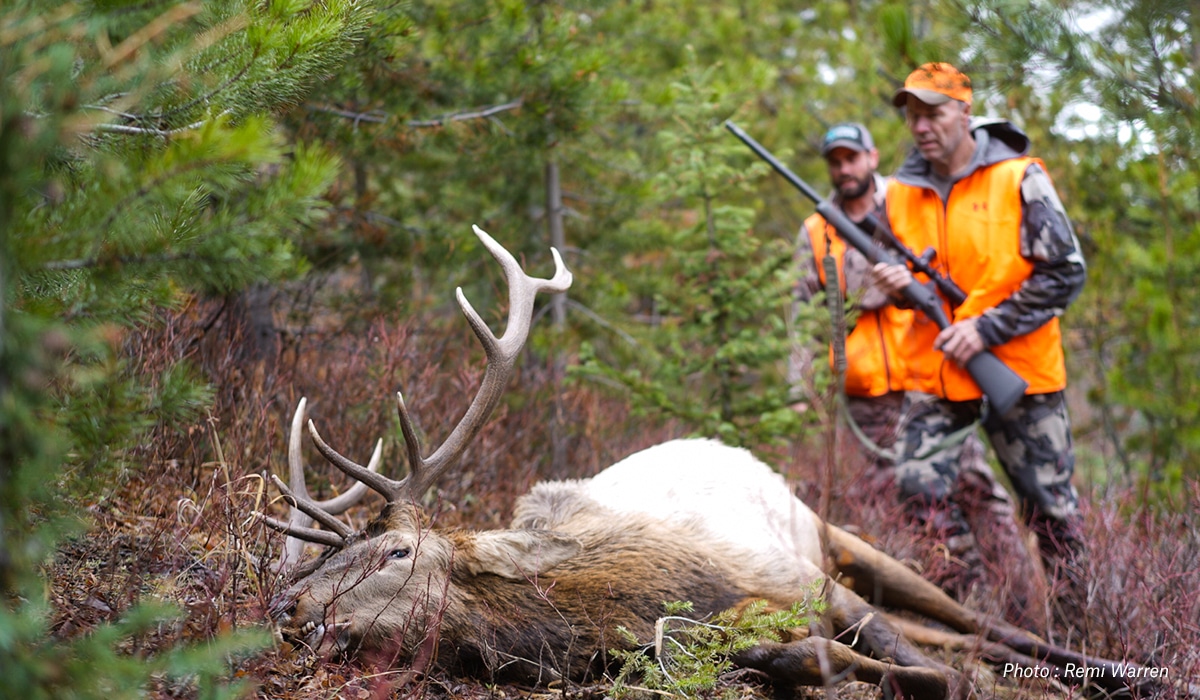Hunting guides are near-mythical in their ability to find big game on a daily basis for their clients. It follows that those of us who would like to be better solo hunters should embrace thinking and hunting like a guide, but unless we can devote months to scouting, weeks on the ground in-season, and years of practice, we won’t achieve that level of hunting guide enlightenment.
That’s okay. There is a way to incorporate a guide’s mentality into your hunting trips. Lifelong guide and onX Ambassador Remi Warren sits down with us and shares what goes into being a hunting guide, how he prepares for success, and how you can improve your own skills.

When did you get started as a guide?
I started guiding in Montana shortly after high school with an outfit that ran all public land hunts. Soon after I expanded to guide elk hunts in New Mexico and overseas in New Zealand and South Africa. When I was 22 I got an outfitter license and began my own outfitting business, which I still run today, managing or guiding 30-50 clients a year and hunting 300 days a year.
What draws you to being a hunting guide?
One thing is being part of the success of a hunter, especially when the hunt is difficult. For me to go out and shoot an elk myself is certainly fun and exciting, but I see it as a testament to hunting skill to take someone out who has less skill than you and make them as successful as you. It’s the challenge of being successful for someone else. It’s made me a better hunter as well.
Expand on that. How do you hunt like a guide when you hunt alone?
When I hunt alone and I see something, I go straight for it and shoot it. Also, if I want to check out a feature like a basin I would just go look for animals and come back (you can watch Remi Warren on his hunts through his show “Solo Hunter”).
When I’m guiding a client, I may have to tailor the hunt because getting into a basin might be an all-day affair. I have to consider my client’s abilities and experience. I likely won’t make them go after an elk unless we know where an elk is going to be, so we do a lot more long-range glassing to find more potential spots where they’ll be. Then I use onX Hunt maps to look for routes suitable for my clients, which might be different than I would take if I were alone. We might find a shorter route that’s steep, or a longer one that’s less steep.
When I’m hunting for myself and going to be in a new area, I’ll e-scout and drop Waypoints for areas I know I’ll want to check out, but I use a certain color for those Waypoints. So step one is putting pins on my maps and then proving those pins. When I go scout the area and I like the place that I’ve marked, I’ll change the Waypoint to a different color. If I don’t like a spot I’ve marked I’ll change it to a third color that tells me I’ve been there but it’s not necessarily a place I’ll come back to.

Detail the experience a guide has that helps set them apart as professional hunters.
Guides will do more hunting and scouting in one year than some avid hunters will do in their lifetime. When you’re fortunate enough to be with a guide who’s done this for 10-plus years, you get 10 lifetimes’ worth of hunting experience. Guides not only bring knowledge related to specific hunting units but of the animals themselves.
The really good guides are able to go anywhere and find animals, especially elk, because we know elk so well. We understand habits and habitats and how to hunt them. Sure it’s a little bit different everywhere, but the hope is that a guide is providing something you can’t get entirely on your own because you don’t have the time to do it.
Statistically, for most people who go chase elk by themselves, at least back when I started as a hunting guide, it was maybe one in every seven years a person would kill an elk, but with a guide it was one in every three years. I’ve hunted in areas with an average 10% success rate and put my clients on animals 100% of the time for 10 weeks. That’s the benefit of hunting with the right guide. That said, there are never guarantees for guided hunts; it’s still hunting.

How much time should a hunter devote to scouting?
It depends on how much time you have, but let’s say you have two weeks to get out. I would scout a week and hunt a week, and I would do that right before the season and then during the season. If I have a five-day hunt in a new area, I’ll spend the first day and a half field-checking those spots I’ve marked at home and the next three and a half days focused on hunting.
Tags that are really important to you and present a rare opportunity, those are the tags that we as guides will put the most energy into for scouting and getting early knowledge of the area. Personally, when I go on my own hunts, I use that same strategy. For instance, if I drew a limited draw sheep tag, I’d rather have 10 days to scout and only one day to hunt. Because I have that knowledge, I know I can be successful in the first hour of the first day of the hunt.
But for a general elk hunt where other people factor in and there are things you can’t control, I prefer to put more time into the hunt than into the scout.

What are skills you want your clients to have that makes them better hunters?
The more fit you are the more success you’re going to have elk hunting. Western hunting is physical. If a client can keep up with his guide, he’ll generally get something in a day. If you’re in really good shape you can go where the elk are.
Also very important is practicing with their weapon and being super proficient. The guide can do everything except pull the trigger. That includes helping a client get set up and get steady, but when it comes to squeezing the trigger and making the shot that’s 100% on the hunter.
I’d say 99% of the time when a client doesn’t get something it’s because they did not spend enough time with their weapon and gear so they made a bad shot. I’ve seen time and again that people go on an elk hunt and bring shooting sticks, yet the first time they ever mess with their shooting sticks is when they’re lining up on an elk.
Hunters should also be practicing their shots not sitting on a bench but in real shooting situations. They should know how their optics and rifle and ballistics work. They should know what drop compensation is and spend enough time with their weapon to know what that actual number is, not just the calculated number. Being able to shoot far will help with success, but being able to shoot distance with accuracy is what it takes. That and being able to get steady fast. I always tell people that you have to practice to be field-ready and field-steady.
How should a DIY hunter think and prepare like a hunting guide?
Guides have more pressure to get on animals than the DIY hunter, but guides overcome this pressure by being prepared. That’s something anyone can do. I know going into every hunt I am as prepared as I can be.
Even in areas I know like the back of my hand, where you could show me a picture and I would know exactly where that is, I still go over my onX maps to look for new ways to hunt those areas. As a guide, I’m trying to find new ways to hunt places more efficiently, and how can I predict where those animals will be.
I have Waypoints everywhere, along with lots of notes. I’m building out a strategy when I’m scouting by journaling, dropping pins, and noting what I found and why I thought it was good.
I start thinking about scouting in the spring because it’s a good mirror of late fall. I look for conditions that are similar early, like the snow line, so I know what to expect in the fall.
If I have a rifle elk tag, I’ll go in and scout during archery season when they’re bugling. You can see the animals and know what’s there. If you’re out looking for animals at the time you should be seeing the most number of them and they’re not there, then you know you can focus on somewhere else. I like to scout every species when they’re most vulnerable.
For mule deer I’ll scout in late summer when they’re “bachelored up” in the high country, out in the open, in velvet, and easy to see. It’s a good way to gauge what the area has.
Over the years you can build a database of animal knowledge and when you look at it, it really starts to paint a picture and that picture becomes a successful picture.